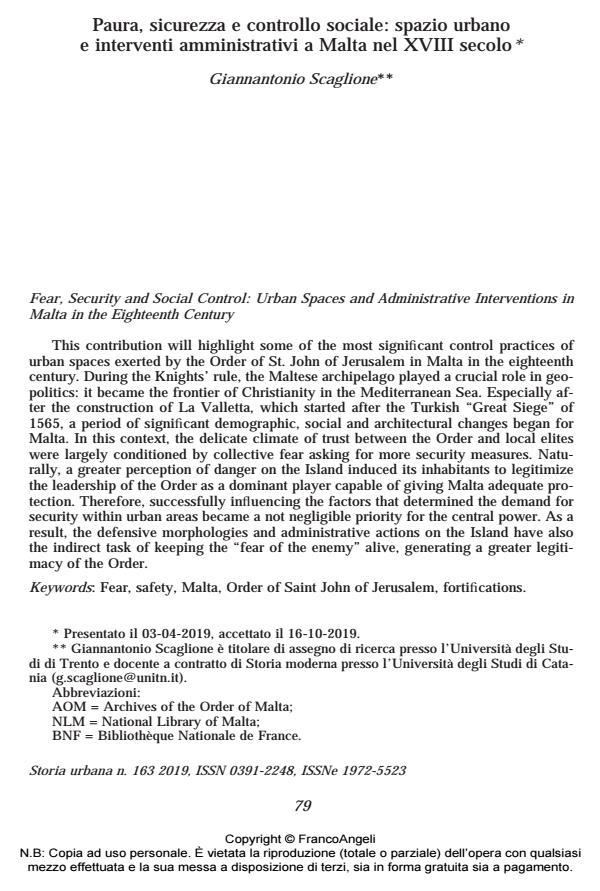Fear, Security and Social Control: Urban Spaces and Administrative Interventions in Malta in the Eighteenth Century
Journal title STORIA URBANA
Author/s Giannantonio Scaglione
Publishing Year 2020 Issue 2019/163
Language Italian Pages 14 P. 79-92 File size 164 KB
DOI 10.3280/SU2019-163005
DOI is like a bar code for intellectual property: to have more infomation
click here
Below, you can see the article first page
If you want to buy this article in PDF format, you can do it, following the instructions to buy download credits

FrancoAngeli is member of Publishers International Linking Association, Inc (PILA), a not-for-profit association which run the CrossRef service enabling links to and from online scholarly content.
This contribution will highlight some of the most significant control practices of urban spaces exerted by the Order of St. John of Jerusalem in Malta in the eighteenth century. During the Knights’ rule, the Maltese archipelago played a crucial role in geopolitics: it became the frontier of Christianity in the Mediterranean Sea. Especially after the construction of La Valletta, which started after the Turkish "Great Siege" of 1565, a period of significant demographic, social and architectural changes began for Malta. In this context, the delicate climate of trust between the Order and local elites were largely conditioned by collective fear asking for more security measures. Naturally, a greater perception of danger on the Island induced its inhabitants to legitimize the leadership of the Order as a dominant player capable of giving Malta adequate protection. Therefore, successfully influencing the factors that determined the demand for security within urban areas became a not negligible priority for the central power. As a result, the defensive morphologies and administrative actions on the Island have also the indirect task of keeping the "fear of the enemy" alive, generating a greater legitimacy of the Order.
Keywords: Fear, safety, Malta, Order of Saint John of Jerusalem, fortifications.
Giannantonio Scaglione, Paura, sicurezza e controllo sociale: spazio urbano e interventi amministrativi a Malta nel XVIII secolo in "STORIA URBANA " 163/2019, pp 79-92, DOI: 10.3280/SU2019-163005